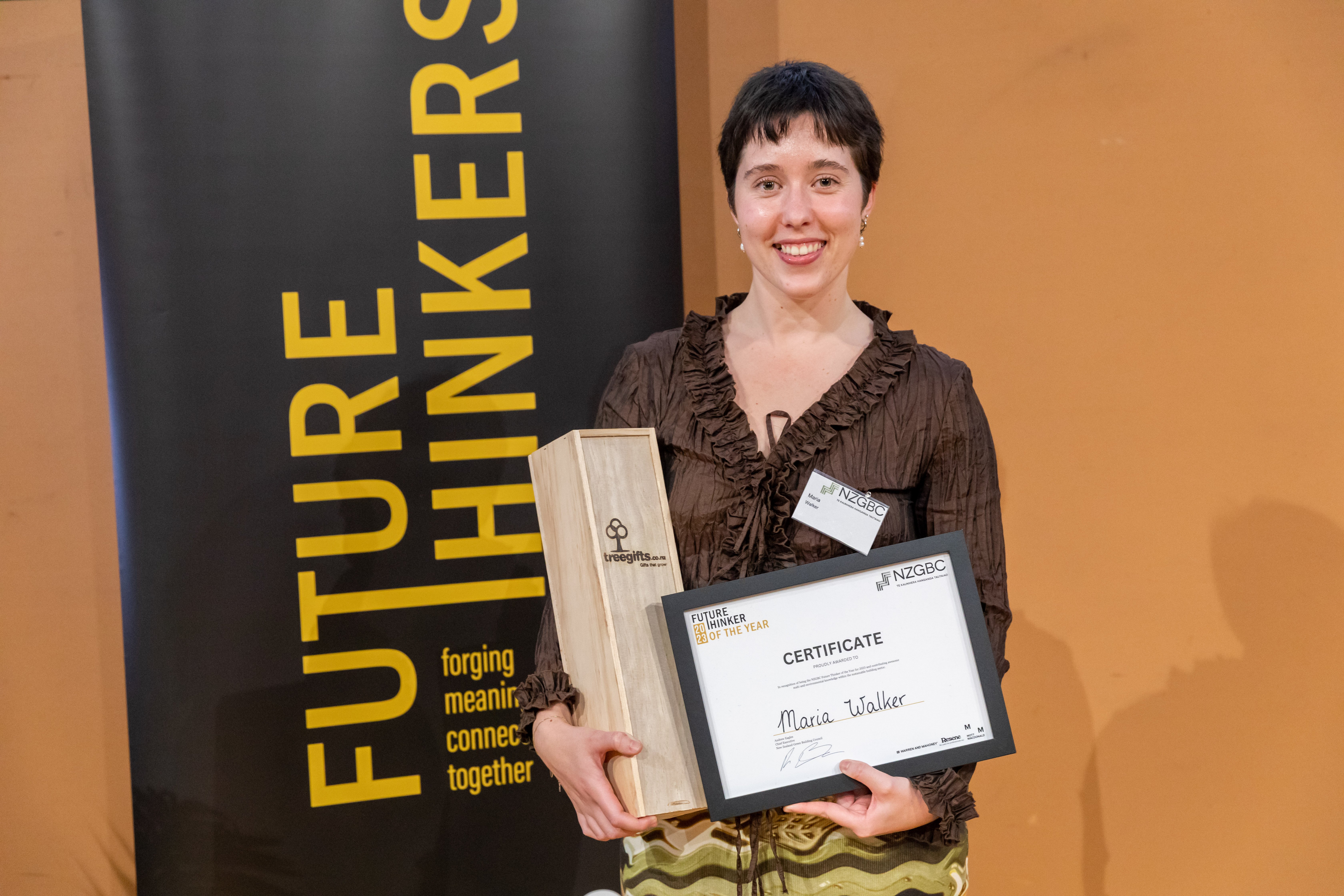Green Star Interiors
Certifying the sustainable design and construction of any building fitout

Benchmarking the sustainable design and construction of building fitouts
The Green Star Interiors rating tool aims to assist clients and project teams to objectively rate their projects and achieve sustainability goals including environmental, health and wellbeing and social goals. It can be used to certify the fitout of any and all types of building, including retail, industrial and public buildings.
The Green Star Interiors tool has a shared investment in making buildings green and making offices comfortable and uplifting. Its holistic assessment makes you consider the multiple facets of a fitout. It’s the best tool to prove a fitout is sustainable and a Green Star fitout is going to stand out above all other rentable spaces. Many agencies and developers are now requiring an Interiors rating for their buildings as they, and the market, see the value in having a Green Star certified office.
Patrick Stone
TM Consultants | Senior mechanical and sustainability engineer and GSAP
What makes a Green Star building?
Green Star is a holistic tool that awards points across various key performance and environmental categories to assess a project's sustainability.
Projects must meet a number of mandatory benchmarks for a lower-carbon, higher-performing project, before using a combination of optional credits to achieve a final score. The greater the number of points, the higher the Green Star rating.
A rating of 4-6 stars can be awarded, with a 4 demonstrating best practice, 5 New Zealand excellent, and 6 stars putting a project among world leaders in green building.


Indoor environment quality
Aims to encourage and reward initiatives that enhance the comfort and well-being of occupants. The credits within this category address issues such as air quality, thermal comfort and acoustic comfort.
Energy
Aims to reward projects that are designed and constructed to reduce overall greenhouse emissions from operations by addressing energy demand reduction, use efficiency and generation from alternative sources.

Transport
Aims to reward projects that facilitate a reduction on the dependency of private car use as an important means of reducing overall greenhouse gas emissions, as well as to encourage the provision of alternative forms of transportation.
Water
Aims to encourage and reward initiatives that reduce the consumption of potable water through measures such as the incorporation of water efficient fixtures and building systems and water re-use.
Materials
Aims to address the consumption of resources for the project, by encouraging the selection of low-impact materials.
Land use and ecology
Aims to reduce the negative impacts on sites' ecological value as a result of urban development and reward projects that minimise harm and enhance the quality of local ecology.
Emissions
Aims to assess the environmental impacts of 'point source' pollution generated by projects and reduce their effects on the atmosphere, watercourse and native animals.
Innovation
Aims to recognise the implementation of innovative practices, processes and strategies that promote sustainability in the built environment.Technical resources (Green Star Interiors NZ v1.1)
Here you'll find everything you need to guide you through your Green Star certification.
Please note, these documents are for the latest version introduced in April 2022 - Green Star Interiors NZ v1.1
If you're project was registered under a previous version of Green Star you can continue to use the submission guidelines and resources associated with that version. Previous versions, including Interiors NZ v1.0 can be found here.
Key resources
- Green Star certification agreement
Submission pointers and guidance
- Guidance - Submitting for Design Review
- FAQs
Submission resources
- Submission folder structure template
Statements
- Modelling producer statement
- Construction and demolition waste reporting criteria
Credit 12 - Visual comfort
- Daylight and views hand calculation guide
Credit 15 & 16 - Energy consumption and GHG
Credit 17 - Sustainable Transport
- 17A - Performance Pathway calculator guide
- 17B - Prescriptive Pathway calculator guide
Credit 18 - Potable water
Credit 21 - Sustainable products
Credit 26 - Refrigerant impacts
Green Star recognises innovation and efforts to carve out new ways of building sustainably. Often these sit outside the current benchmarks laid out in the tool, however points are awarded under a separate 'Innovation' credit. This recognises new initiates with a significant sustainability benefit.
Each project can submit up to 10 innovations to be considered for approval, for a maximum of 10 points towards a Green Star rating.
If you have an idea for an innovation in your project, we encourage you to talk to us as early in the process as possible.
How to claim Innovations
-
After reviewing the section for Innovation in the Green Star Submission Guidelines (Available to members and Green Star professionals below), your Green Star Accredited Professional will then need to register a project’s interest in targeting an Innovation with the NZGBC.
-
You will then need to submit a completed Innovation submission using the template below. This outlines the initiative, its sustainability benefits and relevance in New Zealand.
-
Documentation will then need to be submitted for assessment after registration but before Round Two).
Project teams can provide partial documents or full documents in a 'Pre-Round One' or 'Pre-Round Two' review for each proposed innovation. If the innovation is granted conditionally pending further documentation, all the remaining documents need to be provided in either Round One or Round Two assessment. Innovations can't be targeted after Round Two.
Innovation Challenges
In addition to innovations claimed by projects, both Green Star and Homestar have published a list of innovation challenges. These recognise initiatives that don’t currently fit in to the main framework of these tools but that we believe are important to encourage and recognise. They cover environmental, social and economic sustainability initiatives. While some challenges only apply to some tools, others across all our tools. Several current innovation challenges were originally published by the Green Building Council of Australia for Green Star projects there, but have been adapted for Green Star and Homestar projects in New Zealand.
Table of Innovation Challenges
You are welcome to submit a new challenge relating to sustainability issues you would like to address
Submission Template
The submission template is developed to assist your project with an innovation submission – these will be submitted to us by your Green Star Accredited Professional (GSAP)
Example submissions
These submissions, from NZGBC’s own office fit-out, will give you an idea of what NZGBC expects.
Exceeding IEQ-C credit template and submission documents
Financial Transparency Disclosure Template
- Download
Using sustainable building products and materials is a great way to reduce our footprint, but which ones are best?
Similar to how we advocate independent certification like Green Star and Homestar as a way of verifying whether things are done right, we encourage the use of independent assessments of products and materials by third parties such as Environmental Choice New Zealand, Green Tag, and EPD Australasia.
We do not test, review, or provide eco-label certification for products and materials ourselves. Instead we use authoritative third party certification bodies and eco-labels, and incentivise the use of products that have undergone these assessment by awarding points towards a Green Star rating.
Products recognised in Green Star
- Eco-label certified materials and products
- Products with Environmental Product Declarations (EPDs)
- Reused materials
- Materials with high recycled content
- Responsibly sourced materials with certifiable stewardship programmes
- Low emissions of Volatile Organic Compounds (VOC)
We're happy to work with any of our members to help communicate how their products fit within Green Star. We'd encourage product and material suppliers to get certified under one of our approved eco-labels or generate an Environment Product Declaration.
Submission Guidelines are free for NZGBC members and Green Star Accredited Professionals.
Please login to view, or contact us to purchase a copy
Certification fees
Green Star Interiors
Single project certification
The Certification fee is payable in full upon registration.
| Project value ($) | Members fees 2023/2024 ($) | Non-member fees 2023/2024 ($) |
|---|---|---|
| 0M - < 3M | 18,500 | 24,700 |
| 3M - < 10M | 23,400 | 30,800 |
| 10M - < 30M | 31,700 | 44,800 |
| 30M - < 60M | 40,700 | 57,500 |
| 60M - < 100M | 49,700 | 70,000 |
| 100M - < 150M | 60,800 | 82,300 |
| 150M + | 72,000 | 93,500 |
Register a project
Complete the form to register a project and begin your Green Star journey
Green Star rated buildings
Explore the growing list of Green Star certified buildings and case studies

